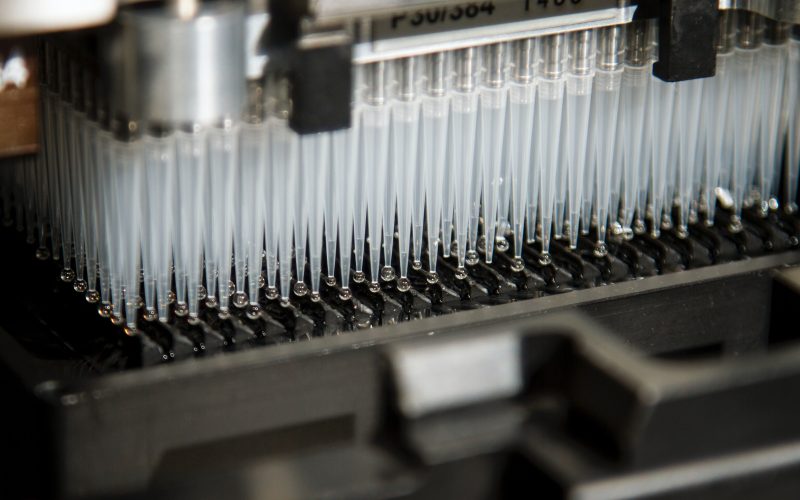Are you curious about the future of medical science and the role emerging technologies will play in animal testing ethics? With advancements in AI, 3D printing, and organ-on-a-chip technology, it’s becoming increasingly possible to simulate human physiology without relying on animal models. In this blog post, we’ll explore how these technologies could shift the debate on animal testing ethics and pave the way for more ethical and effective medical research. Join us as we embark on a thought-provoking journey into the world of medical science innovation!
The current debate on animal testing ethics
Animal testing has long been a controversial issue in the medical community. Some believe that it is necessary to test new drugs and treatments on animals before they can be used on humans, while others argue that this practice is cruel and unnecessary.
The debate on animal testing ethics was brought into the public spotlight recently when news broke that a Chinese scientist had gene-edited human embryos for the first time. This sparked a worldwide debate on the ethical implications of such research, with many people arguing that it is a step too far.
The current debate on animal testing ethics centers around two main camps: those who believe that it is necessary to test new drugs and treatments on animals before they can be used on humans, and those who argue that this practice is cruel and unnecessary. There are strong arguments to be made for both sides of the debate, but as of now, there is no clear consensus.
Some proponents of animal testing argue that it is necessary in order to ensure the safety of new drugs and treatments. They point to the fact that animals have been used in medical research for centuries, and that this research has led to countless lifesaving treatments for both humans and animals. Without animal testing, they argue, we would not have many of the vaccines and medications that we take for granted today.
Opponents of animal testing argue that it is cruel and unnecessary. They point out that animals in experiments are often subjected to painful procedures with no hope of recovery, and that many of these
The pros and cons of using animals in medical research
Animal testing has been a controversial issue for many years, with proponents arguing that it is necessary for medical progress and opponents arguing that it is cruel and unnecessary. The debate has been further complicated by the advent of new technologies that could potentially replace animal testing. In this blog article, we will explore the pros and cons of using animals in medical research, as well as the potential impact of emerging technologies on the debate.
On the pro-animal testing side, it is argued that animals have played a vital role in medical progress. For example, animal testing was essential for the development of vaccines against polio and smallpox. Animal testing is also credited with helping to develop treatments for cancer, heart disease, and HIV/AIDS. Proponents argue that without animal testing, many lifesaving treatments would not exist today. They also point out that animals are not good models for all human diseases, but they can provide valuable insights into how diseases develop and how drugs might work to treat them.
On the other hand, critics of animal testing argue that it is cruel and unnecessary. They point out that animals are often subjected to painful procedures and may be confined to small cages for their entire lives. In addition, they argue that there are alternatives to animal testing that can provide just as much information about a potential treatment without causing suffering to animals. Finally, critics argue that animal tests are not always predictive of how a drug will affect humans, leading to false positives or negatives that can delay or prevent lifesaving
How emerging technologies could change the debate
Emerging technologies are poised to change the debate on animal testing ethics.Animal models have been used for centuries to understand how diseases progress and to test potential treatments. However, these models have limitations, and there is an increasing recognition that they may not always be predictive of human response.
As new technologies emerge, we have the opportunity to revisit the ethical debate around animal testing. Alternatives to animal models, such as in vitro or computer-based models, could reduce or replace the use of animals in research. These approaches could provide a more efficient and effective way to test potential treatments while also reducing the ethical concerns associated with animal testing.
The future of medical science is likely to be shaped by emerging technologies that could shift the debate on animal testing ethics. As we learn more about the limits of animal models and develop new alternatives, we will need to consider the ethical implications of our choices and make sure that our decision-making is based on a solid understanding of the available evidence.
The potential implications of new technologies on animal testing
As medical science and technology continue to evolve, so too does the debate on the ethics of animal testing. With new technologies emerging that have the potential to greatly reduce or even eliminate the need for animal testing, many are calling for a reevaluation of the current practice.
While there is still much disagreement on the issue, it is clear that the potential implications of new technologies are significant and warrant further discussion and exploration. Below are just a few examples of how emerging technologies could shift the debate on animal testing ethics:
1. Increased accuracy and precision: One key argument in favor of animal testing is that it allows for greater accuracy and precision in research than alternative methods such as computer simulations. However, as technology advances, so too does our ability to create more realistic and accurate simulated environments. This could eventually lead to a situation where animal testing is no longer necessary or considered ethical.
2. Reduced reliance on animals: Another potential implication of new technologies is a reduction in the overall number of animals used in research. For example, 3D printing is already being used to create models of human organs and tissues that can be used for testing purposes. As this and other similar technologies become more widespread and refined, we may see a dramatic decrease in the number of animals needed for research projects.
3. Greater understanding of animal physiology: As our understanding of genetics and physiology increases, we are also gaining a better understanding of how animals react to various substances and treatments. This knowledge can
Conclusion
Animal testing has long been a controversial issue, and it’s clear that emerging technologies could bring about a sea-change in the way trials are conducted. From virtual cell models to optical imaging, these new tools open up exciting possibilities for reducing animal suffering while still allowing us to make breakthroughs in medical science. To ensure that this technology is used ethically, meaningful collaboration between researchers, industry professionals and others will be essential going forward. With the right approach, we can create an ethical future of medical research that brings benefit not only to human health but also to animals around the world.










